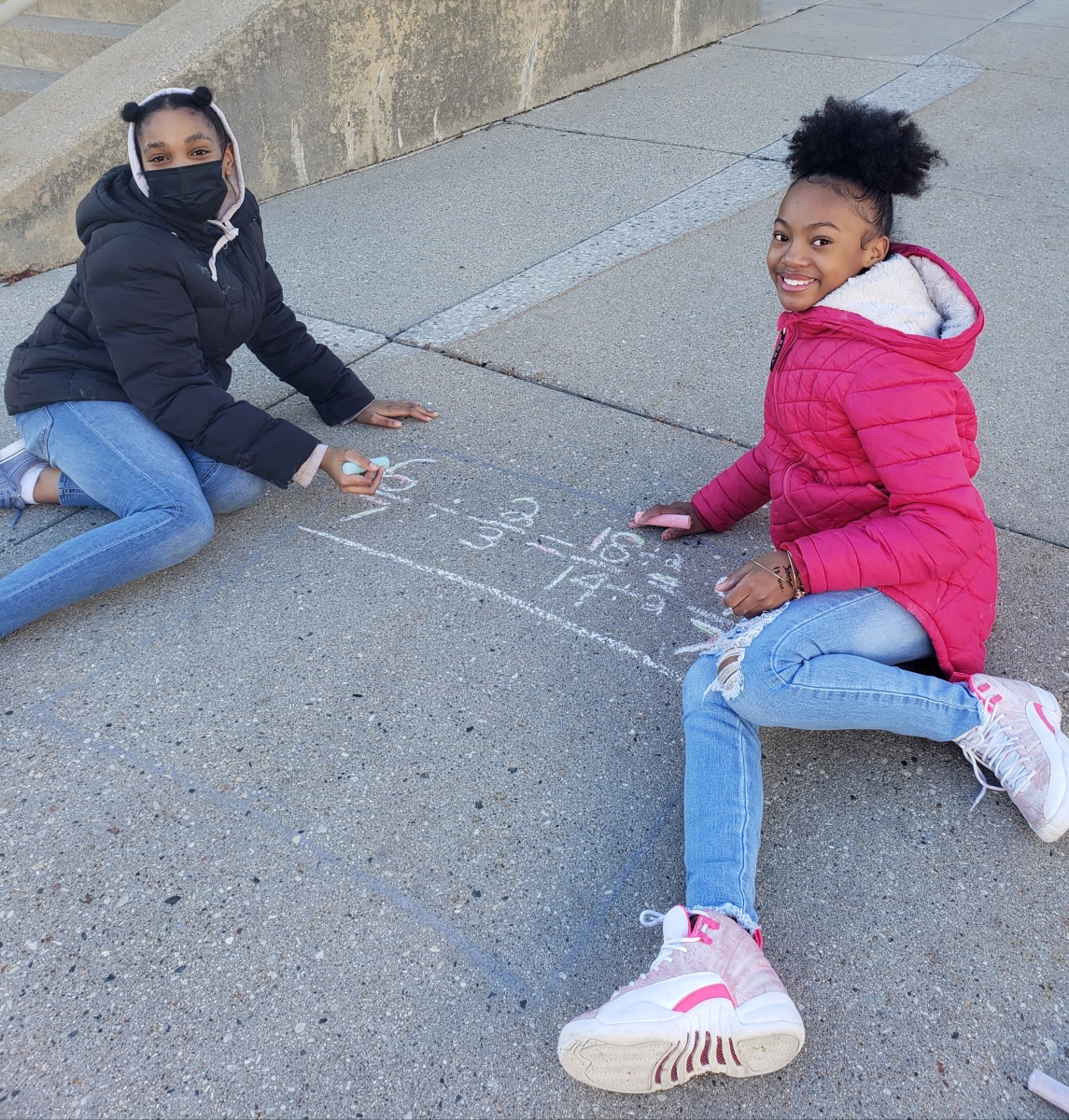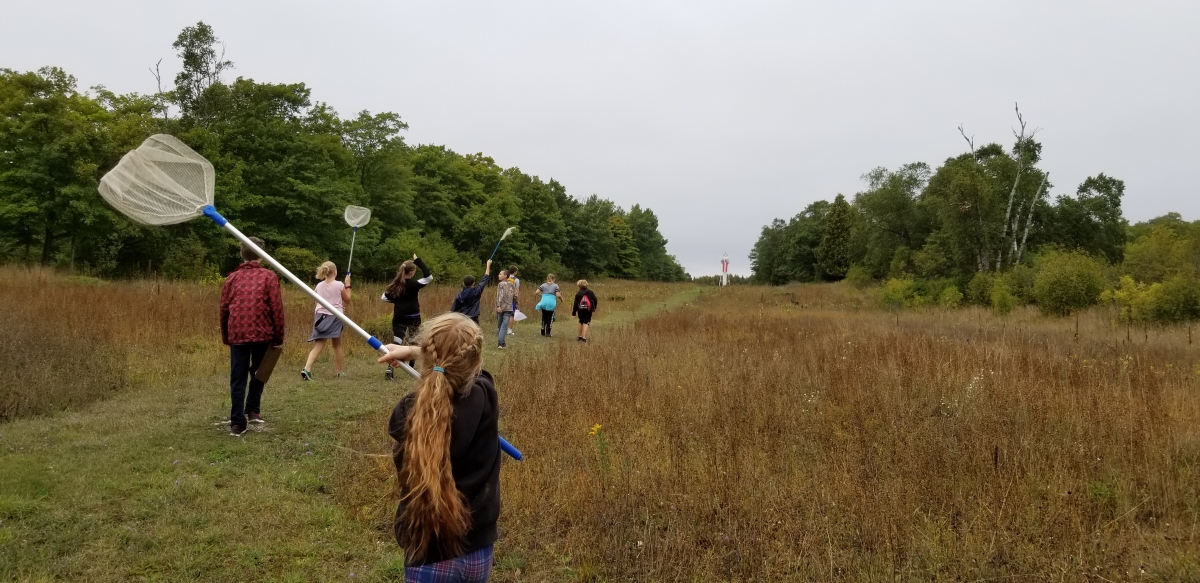On Earth Day, the U.S. Department of Education released the names of the 2022 U.S. Department of Education Green Ribbon Schools, which included five Wisconsin schools:
- Escuela Verde, Milwaukee
- A. E. Burdick School, Milwaukee, Milwaukee Public Schools
- Golda Meir School, Milwaukee, Milwaukee Public Schools
- Cambridge Elementary School, Cambridge, School District of Cambridge
- Washington Island School, Washington Island, Washington Island School District
These schools are helping to lead a movement across the state to reduce environmental impacts and costs, improve health and wellness, and increase environmental literacy in which over one-third of our schools are engaging.
Green & Healthy Schools Wisconsin compiles data from schools and partners to get a pulse on sustainability in the state’s schools (view this data here). All public, tribal, and private schools as well as early learning centers are invited to complete a survey between May and October annually to share accomplishments from the prior school year. Schools that demonstrate significant accomplishments across all three goals are invited to submit additional narrative information for consideration for nomination to the U.S. Department of Education Green Ribbon Schools.
Wisconsin’s 2022 U. S. Department of Education Green Ribbon Schools honorees showcase some of the ways in which schools are striving to meet these goals:
Escuela Verde: Creating a Just, Peaceful and Sustainable Future

As a project-based learning school, students at Escuela Verde in Milwaukee explore how science and ecology connect to many other domains. Students choose a topic for their senior thesis projects that they are passionate about and complete a year-long, 300-hour project. Recent topics have involved leading nature hikes and forest bathing; improving health and well-being through biking, camping, mindfulness, and art therapy; organizing neighborhood cleanups; building a chimney swift tower; and distributing bird houses.
In 2017, Escuela Verde joined the Milwaukee Better Buildings Challenge and received an energy score of 94. The school has energy efficient windows, lighting, and heating/cooling systems. The school also installed a solar voltaic array on the roof, which offsets about 32 percent of the school’s electrical use. Students were directly involved in the research and installation of the panels and monitor the system. The school’s emphasis on food and food justice has led to an entirely vegetarian school lunch. Efforts to reduce waste include composting and the use of cloth towels and mops rather than paper towels.
Escuela Verde’s guiding curriculum is based on sustainability themes, which have been adapted from The Cloud Institute’s Education for Sustainability Standards & Indicators. Each quarter, the advisory curriculum is rooted in one of these sustainability themes. Every winter, staff and students travel to the northern part of the state for a week-long retreat in which students engage in place-based environmental education, including science content, snowshoeing, skiing, and shelter building. In the spring, students participate in a service-learning week, which often includes outside activities, such as invasive species removal or improving the native plant garden and other spaces. At the end of each year, the school offers a week long camping trip to a Wisconsin state park.
Cambridge Elementary School: Green Spaces to Live, Learn, and Grow

Students at Cambridge Elementary School have lessons in the school forest, use recess time for walks in the woods, help preserve and restore the school forest, participate in environmental and ecology clubs, and support social-emotional wellness by walking through natural areas. Place- and project-based activities allow students to apply specific local knowledge to other places, situations, and environmental conditions. Students learn the joy and hard work of gardening from planting seeds to harvesting the homegrown produce. A farm-to-school Chef in the Classroom program uses student-grown produce to incorporate math, science, language arts, and social studies, in addition to nutrition education. Students work to rid the campus of invasive species and engage in local creek water quality monitoring.
The school has added more efficient lighting, improved building envelope, and installed rooftop solar photovoltaic panels and solar thermal heating, in addition to purchasing renewable energy sources. Water bottle filling stations and automatic sensors conserve water indoors. Annual bike- and walk-to-school days raise awareness about alternative transportation. All students and staff engage in composting. The school’s 40-acre site includes nine acres of woods and three acres of wetlands, which contain native, sustainable vegetation that does not require mowing or irrigation. Physical education classes are held outside, throughout the winter months, with activities like snowshoeing and sledding. Use of the school forest’s nature trails is supported by trail guides with mini-lessons and benches for an outdoor classroom.
A. E. Burdick School: Preparing Students to Advocate for Environmental Sustainability

In 2017, A. E. Burdick School in Milwaukee began planning and raising funds for a green infrastructure redevelopment project, which was completed in 2019, and included removing 26,600 square feet of impervious surface and replacing it with porous surfaces, such as trees, woodchips, native landscaping, bioswales, and cisterns. The improvements helped to eliminate a buildup of water that accumulated behind the school’s greenhouse and return it to the watershed. The outdoor classroom features movable tree cookies, recycled logs and stumps, and Leopold benches. The campus also features food gardens, a “tot lot” for early childhood play, habitat spaces, a school forest, and berry patches. An outdoor discovery cart provides the materials needed to learn outdoors with a quick easy setup. Teachers apply environmental lessons in all areas of the curriculum, with a focus on life sciences, nutrition, horticulture, and environmental studies. Older students discuss more complex processes, such as global warming and decomposition.
The surrounding neighborhood benefits from Burdick’s urban community greenhouse, where students, teachers, and community members work together to plant, harvest, and prepare foods. In the last 12 months, Burdick has made multiple energy efficiency upgrades, including to its building envelope, kitchen, and office equipment. Burdick employs computer power management settings, thermostat temperature setbacks, hot water temperature set points, and daylighting. Students participate in classroom and garden composting.
Golda Meir School: Students Designing for Sustainability

In Milwaukee, Golda Meir School’s active green team has educated stakeholders, installed a new playground, and devised an interactive app to encourage physical activity. The school features automatic water shutoffs, composting, and cooking clubs. A holistic schoolyard redevelopment project replaced 10,060 square feet of asphalt with new green space and mixed-use recreation and educational areas. The redeveloped schoolyard manages stormwater through green infrastructure features, including bioswales, native plantings, a porous turf field, and a 26,600-gallon underground cistern. Green team students are designing a smart recycling bin that senses the appropriateness of the type of material inserted. Flexible seating, fidget toys, and other tools help keep students focused in class. Peer mediation, positive behavioral interventions and supports, restorative justice, yoga, meditation, and a mindfulness curriculum further support wellness and social-emotional health. With specific classes dedicated to sustainability, all students participate in lessons and learn standards related to environmental science and health.
Washington Island School: A Tiny School Doing Mighty Things

Surrounded by the waters of Lake Michigan, Washington Island School features two solar arrays that provide educational opportunities as well as reduce the school’s reliance on fossil fuels. Low-flow, high-efficiency, touchless restroom fixtures help conserve water. Students go outdoors for recess unless it is below 0 degrees Fahrenheit. Students participate in an annual Island Clean-up Day. The school community has worked to curate an interactive school forest and to farm sustainably on adjacent properties. Activities include planting in the orchard and vineyard, grafting and pruning grape vines, and tracking and analyzing data. Most recently, middle and high school students worked in teams to develop plans and a design for a new forest path. Middle school students have been engaged in STEM competitions that focus on developing solutions to real-world sustainability problems. These include the SeaPerch Underwater ROV Challenge; the National Environmental Education Foundation Climate Superstars Challenge; and, before that, the Samsung Solve for Tomorrow Contest, with projects that address ticks passed to humans and invasive aquatic species. Collaboration with the U.S. Fish and Wildlife Service, the Wisconsin Department of Natural Resources, and Monarch Watch afford students citizen scientist opportunities.
All Wisconsin schools and early learning centers are invited to request an account here on the Green & Healthy Schools Wisconsin website to share their stories when the survey opens on Monday, May 2.
Subscriber submission: Wisconsin Department of Public Instruction Environmental Education & Service-Learning Consultant Victoria Rydberg